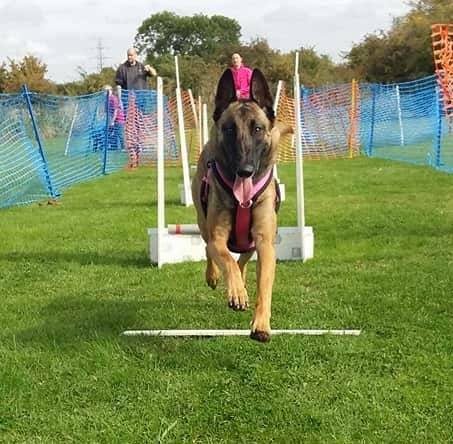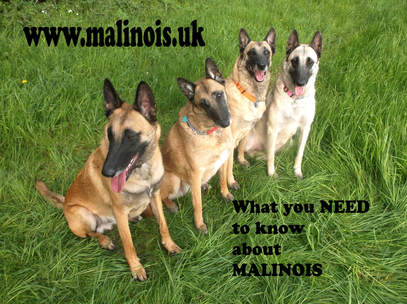


|
TRAINING
THE MALINOIS
You can train a Malinois to do virtually anything, but there is also nothing more stubborn than a Malinois that does not want to do what you ask of him. This is a dog that has to be MOTIVATED. Many a police dog handler has had to be re-trained when moving on to a Malinois after being used to German Shepherds. It's pointless trying to force a Malinois to do anything, as he will be much stronger than you, and will not like and respect you if you try to force anything. The Malinois use their brains a lot, some would say too much!, and as such will not blindly accept whatever is asked of them, initially. You have to convince the dog that there is a good reason for doing what is asked of him -and that reason cannot simply be that you WANT it to happen. There has to be something in it for the dog. Malinois are usually either very food orientated or very toy orientated, or indeed both. Use whatever reward works for your dog when training. There are almost as many views on training methods as there are breeds of dog, but is is universally accepted these days that kind and reward based training makes for a happy dog that is quick and easy to train. The police typically use toys (such as tennisballs) as a reward, and I know of sniffer dogs that were trained using sausages. Clicker training is very effective. Once a Malinois wants something, they will do almost anything to get it. Using positive methods doesn't mean the dog should be given no boundaries, and personally I firmly believe there are times when a Malinois does need a firmer hand. But you also have to adapt your training to suit your dog -not all Malinois are the same, and what works for one may not work with another. No puppy is too young to be trained, and so training should start the moment you come home with your new puppy. This does not necessarily mean strict obedience exercises (although they can be started as well if you wish to compete), but general training that must be made FUN for the puppy. Puppies will learn very quickly and if you turn the training sessions into play, they will not even realise that they are being trained. Malinois are high energy dogs that can be very stubborn but also sensitive and I strongly recommend that you take your puppy to a good training class, for him or her to socialise with other dogs and get used to being trained with other dogs and people around it. One vital early lesson is of course to come back when called. Call your puppy as often as only possible, both indoors and out, just to offer a treat, a toy, or a cuddle. His or her name should mean something NICE is about to happen. When starting to go for walks, find a secure area and allow your puppy off lead from day one! Puppies around the age of 8-10 weeks are like little ducklings and will follow you wherever you go. Work with this! Run a few steps away from your pup and praise a LOT when he or she follows you. Hide behind a tree, a bush. Teach your puppy that it needs to keep an eye on where YOU are, rather than the other way around. If you start as you mean to go on, your puppy will always be reliable offlead and will not go too far away without checking that you are still nearby. If you do lead exercises only until older, you lose the early “duckling” advantage which only last a couple of short weeks. |
|
|
